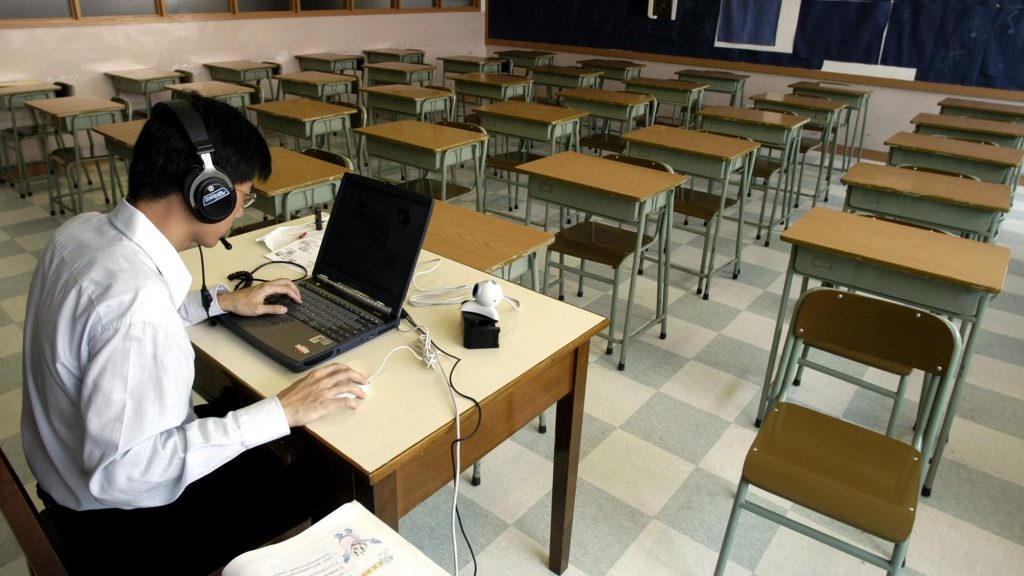Bringing the school to the home room
The current global circumstances have forced many of us to step out of our ordinary routines. We’re at home. Some of us are teaching at a distance for the very first time. Others are looking for resources and activities our students can do while at home.

Everyone who is teaching at any grade is overwhelmed with suggestions of what to do. We are in a tornado of suggestions of lists of tools and this and that and the other. It would be nice just to have one thing that you could do. Something that could help you improve your online teaching or start teaching online if you have never done it. There is one and it is Google Classroom.
There is a good chance that you have heard of Google Classroom. For most of us, Google Classroom is like those pair of sneakers that help us get fit every morning.
Google Classroom is an asynchronous learning tool – meaning that you set or share a piece of work at a particular time, and your students engage with it at a time and in a place to suit them. In a class in Classroom you can post digital resources for your students (web links, documents, videos), set self-marking quizzes for students and collect their work.
You can start with the video below:
If you prefer written instructions, you can also view similar information in a PDF file here.
“Face-to-face” using Google Hangouts
Google Hangouts is a version of video chat software. If you know your students are going to be online at the same time –synchronously– then Google’s Hangouts Meet is a great way for you to check-in on them – and for them to check-in with one another. While it’s not yet completely woven-in to Google Classroom, there are plenty of guides on how you can easily add a Hangouts Meet into a class you’re running with Google Classroom.
In the video below, you’ll learn the basics about Google Hangouts:
Here’s a simple document to get you started. Here’s a brief summary of some teaching ideas.
Online Teaching more generally
At this point, you may have started to figure out how these tools work. Now what? Here are some general things to consider as you start to actually plan lessons, and not just what you are going to use to try to deliver them. Also, keep in mind – this stuff is NOT easy. It can take years just to hone your teaching craft, and you’re probably trying to get a class going online in a mere fraction of that time. Be patient with yourself, and for now, celebrate small successes.
Setting
So you’ve gone from the classroom to the home room. Literally, you are at home, and so are your students.
Before you get too far into things, the first thing you may have to contend with is where everyone is. What is their access like? Is their wifi signal strong? Are some students in well-resourced and serene homes while others struggle for a quiet place to work? Is their setting supported by a generous and engaged community of parents and caregivers, while others are flying solo? Considering this, you might have your first meeting be just that – a meeting. No agenda, just a test of equipment, a sort of getting reacquainted in our news spaces. In many ways, you are establishing a new classroom culture.
Simplicity
Many lauded online teachers combine a passion for their subject or grade with an equal passion for applying technology in that setting. The support they get might be more focused, their school could be well-resourced, their spouse might give them time and space to experiment with technology at home – that doesn’t have to be you. In fact, if you’re in a different setting, it can’t be you. When you read transformative accounts of how online learning changed everything in a school, look for the clues as to why it happened and learn from them – don’t just be distracted by the sparkling outcomes.
One of the best ways to deliver a useful and rich online learning experience is to keep things simple, and in many ways, get back to the basics. Here are some questions that will help you focus on your objectives, so that you can create online learning that is suited to the needs of your students.
If you could give your students a single piece of knowledge or insight, what would it be?
How would you communicate this to them in your normal classroom setting o?
How would you expect them to respond – in spoken, written or other creative formats?
How would you assess their responses, either to understand what they have learned or further develop their thinking?
You don’t have to know what your first online activity will look like yet, think about the outcomes – for your students, your class, your school, and you. If it seems intimidating – don’t worry, lots of teachers across the world are looking at this wondering how to get started – but we’re going to clear a path through this jungle of choices for online learning.
In the meantime, wash your hands, look out for those around you and look after yourself.

